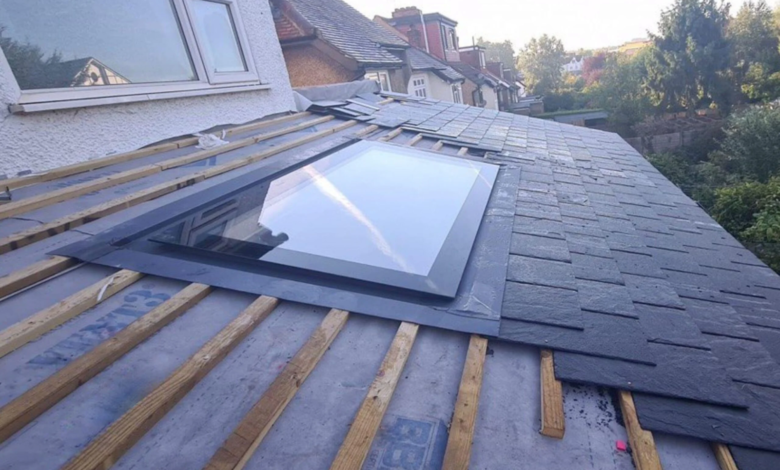Pitched Rooflights: Enhancing Daylight and Design in Commercial Buildings

The importance of natural light in architecture has grown considerably in recent years, driven by the need for healthier, more sustainable, and energy-efficient spaces. While flat roofs are common in many industrial and commercial buildings, pitched roofs remain a practical and attractive architectural choice for offices, schools, retail spaces, and public facilities. To maximise daylight in such structures, pitched rooflights offer one of the most effective and elegant solutions.
Pitched rooflights are specifically designed to integrate seamlessly with angled or sloping roofs, capturing sunlight and directing it into the spaces below. Beyond their functional value, they enhance visual appeal, reduce energy consumption, and promote occupant well-being. This article explores the design, benefits, materials, installation, and applications of pitched rooflights, along with current challenges and future trends.
What Are Pitched Rooflights?
Pitched rooflights are glazing units installed on sloped or angled roofs, typically between 15° and 60°. They follow the pitch of the roof, providing a flush or near-flush finish that blends harmoniously with the building envelope. Unlike vertical windows, which admit light from the side, rooflights bring daylight in from above, filling interiors with evenly distributed natural light.
In commercial settings, pitched rooflights are available in a wide range of sizes and configurations, from compact modular units to expansive glazing systems. They can be fixed, openable for ventilation, or fitted with advanced options such as solar-control coatings and automated blinds.
See also: Unlocking Academic Success with At-Home Tutoring in Fremont
Why Choose Pitched Rooflights?
Pitched roofs are often chosen for both aesthetic and practical reasons. Their shape allows for efficient drainage of rain and snow, which extends the lifespan of roofing materials and reduces maintenance. The slope also presents an excellent opportunity for daylighting.
By aligning with the sun’s path, pitched rooflights capture abundant natural light, especially in south-facing orientations. This makes them ideal for brightening interiors that would otherwise rely heavily on artificial lighting. Their placement on sloping surfaces means they often receive more direct sunlight than vertical glazing.
Architecturally, pitched rooflights elevate the external appearance of a building, adding a refined and modern character. Internally, they create striking light patterns that enhance spatial quality. For commercial properties, this balance of practicality and beauty adds significant value.
Benefits of Pitched Rooflights
The benefits of pitched rooflights span environmental, economic, and human well-being considerations.
A key advantage is improved energy efficiency. By reducing dependence on artificial lighting, they help lower electricity costs. When equipped with high-performance glazing, they also minimise heat loss in winter and reduce overheating in summer, supporting lower HVAC energy use.
Natural light has well-documented effects on health and productivity. Employees working in daylight-enriched environments report better concentration and morale. In educational settings, natural lighting supports student performance, while in retail spaces, it encourages longer visits and increased spending.
From a design perspective, pitched rooflights make interiors feel larger and more uplifting. They are particularly effective in offices, hospitality venues, and healthcare facilities, creating open and welcoming atmospheres. Products such as Skylights Roof Lanterns are designed with these principles in mind, combining aesthetic appeal with advanced energy performance.
Pitched rooflights also contribute towards sustainability targets. Incorporating them can earn credits in green building certifications such as BREEAM, LEED, or WELL, improving a property’s marketability and long-term value.
Materials and Construction
Pitched rooflights are built using durable materials that perform well in demanding environments.
The glazing is usually made from toughened or laminated glass, chosen for its clarity, strength, and longevity. Options include double or triple glazing for thermal insulation, low-emissivity coatings to reduce heat transfer, and solar-control finishes to limit glare and overheating.
Frames are most commonly made from aluminium or steel, offering strength and support for large panes of glass. Aluminium is particularly favoured due to its light weight, corrosion resistance, and ability to include thermal breaks. Timber or composite frames may be used when a natural aesthetic is desired.
Modern systems often integrate weatherproof seals, drainage channels, and upstands for reliable performance. Optional extras include motorised openings, rain sensors, and automated blinds.
Installation Considerations
Proper planning is essential for the installation of pitched rooflights. Orientation is particularly important: south-facing slopes capture maximum light but can increase heat gain, while north-facing slopes provide soft, consistent illumination.
The roof pitch must be carefully matched to the design of the rooflight to ensure water resistance and visual integration. Steeper roofs generally reduce the risk of water pooling but may require additional support for large installations.
Compliance with building regulations is vital. Rooflights must meet safety standards related to fire resistance, insulation, and impact protection. In commercial settings, laminated or shatterproof glazing is often mandatory.
Professional installation ensures correct sealing and alignment, preventing leaks or thermal losses. Regular maintenance and inspections are recommended to maintain performance over time.
Applications of Pitched Rooflights
Pitched rooflights are highly versatile and suitable for various commercial buildings:
- Offices: Brighten workspaces and enhance productivity.
- Retail spaces: Create inviting interiors that showcase products.
- Schools and universities: Support learning environments with natural light.
- Healthcare facilities: Foster healing atmospheres in wards and waiting areas.
- Hotels and restaurants: Add warmth and sophistication to interiors.
- Public buildings: Bring natural light and elegance to museums and galleries.
In all these contexts, pitched rooflights enhance both function and experience.
Challenges and Limitations
Despite their advantages, pitched rooflights come with considerations such as potential overheating, glare, or heat loss if poorly insulated. Proper glazing and solar-control measures can help address these issues. Installation quality is also crucial to prevent water leakage and structural concerns. While premium systems, such as those from Skylights Roof Lanterns, can be an investment, they typically offer excellent long-term returns through energy savings and improved user satisfaction.
Innovations and Future Trends
Technological advances are shaping the next generation of pitched rooflights. Smart glazing that adjusts tint based on sunlight, integrated ventilation systems, and sustainable materials are becoming increasingly common. Custom designs now allow architects to specify unique shapes and frameless finishes that enhance architectural expression.
As the demand for energy-efficient and people-focused buildings continues to rise, pitched rooflights will remain essential in modern architectural design.
Conclusion
Pitched rooflights are more than architectural features; they are key to creating bright, efficient, and healthy environments. By bringing natural light deep into interior spaces, they enhance design quality, reduce energy costs, and promote well-being. With innovations in glazing and automation, pitched rooflights will continue to play a vital role in shaping the future of commercial architecture across the UK.



